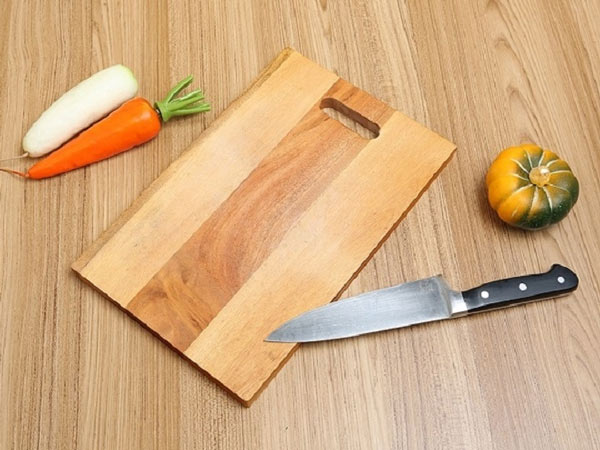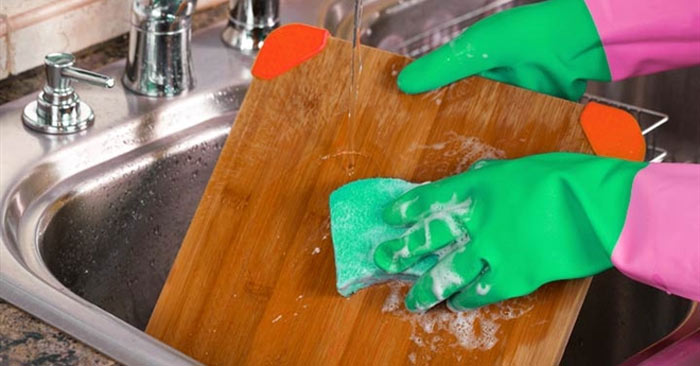8 Common Mistakes People Make with Cutting Boards
The cutting board is an essential tool in every Vietnamese household kitchen. However, not everyone is aware of the correct usage of cutting boards, particularly wooden ones. To ensure the health and safety of yourself and your family, it is important to avoid these 8 common mistakes when using a cutting board.
2. Selecting the Right Wood for Your Project
Wooden cutting boards are a preferred choice for countless households due to their exceptional durability, significant weight, and ideal suitability for chopping and cutting various foods. Amongst the most highly sought-after wooden cutting boards are those crafted from finely ground wood, bamboo, mother of pearl, tamarind wood, as well as pressed rubber wood.
Wooden cutting boards also have some drawbacks. They are prone to absorbing water and odors, which can lead to the growth of bacteria. Additionally, wooden boards are susceptible to rotting, cracking, and warping over time.
When purchasing a cutting board, it is important to avoid opting for low-quality wood that lacks clear product origin and has a colored surface. Instead, it is recommended to select a wooden cutting board that offers high elasticity and durability, minimizing the chances of warping or rotting.

Warning: Using a Cutting Board with Many Cracks May Be Dangerous
It is common for families to rely on cutting boards for extended periods, sometimes even up to a decade. However, over time, wooden cutting boards tend to develop cracks, creating an ideal breeding ground for various bacteria. That is why experts advise replacing cutting boards every two years to maintain optimal hygiene standards.
Benefits of Utilizing Both Sides of the Cutting Board
Using one side of the cutting board for chopping vegetables and raw food, while reserving the other side for slicing cooked food, is a common practice. It is important to note that the surfaces on which cutting boards are placed, such as the floor and kitchen shelves, are often dirty and harbor countless bacteria. Consequently, when the cutting board is laid down, bacteria can easily transfer onto its surface. Therefore, in order to maintain optimal safety and hygiene, it is recommended to exclusively use one side of the cutting board.
“How to Clean a Cutting Board: Step 4 – Use the Dishwasher”
Cutting boards should not be placed in the dishwasher, regardless of whether they are made of wood or plastic. Prolonged exposure to heat and water can cause warping and cracking. To clean cutting boards in a safe and hygienic manner, please refer to the informative article “Summary of Simple and Effective Ways to Clean Wooden Cutting Boards.”

What Materials are Best for Making Cutting Boards?
Cutting boards crafted from materials such as glass, marble, or Corian boast attractive decor that appeals to numerous homemakers. Nonetheless, these specific cutting boards pose practical challenges, as their inherent slipperiness makes food preparation a cumbersome task. Furthermore, the continued use of these boards can cause accelerated wear and tear on your knives, necessitating frequent replacements.
“The Pitfalls of Working with an Insufficient Cutting Board”
To ensure hygiene while preparing food, it is advisable to opt for cutting boards that are slightly larger in size. Using a small cutting board may cause food to easily slip off, thereby compromising cleanliness. For optimal functionality, it is recommendable to choose cutting boards with a diagonal length longer than the knife’s size.
Cutting Meat and Vegetables on the Same Board
It is strongly advised to use separate cutting boards for different types of food to maintain hygiene and prevent the occurrence of digestive illnesses. Using a single cutting board for all foods is unhygienic and increases the risk of cross-contamination. To ensure food safety, it is recommended to use separate cutting boards dedicated for meat and vegetables respectively.
How to Maintain Moisture on Your Cutting Board
Properly drying your cutting board after washing is crucial in preventing the growth of bacteria. Wet surfaces provide a favorable environment for pathogens to develop. Therefore, ensure that your cutting board is completely dry before placing it on the rack. This simple practice significantly reduces the chances of bacterial multiplication.
The post https://meo.tips/health-and-life/8-common-mistakes-people-make-with-cutting-boards/ appeared first on Meo.tips.
View more from Meo.tips:
Comments
Post a Comment